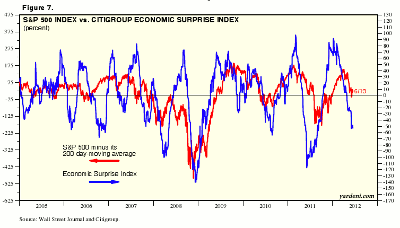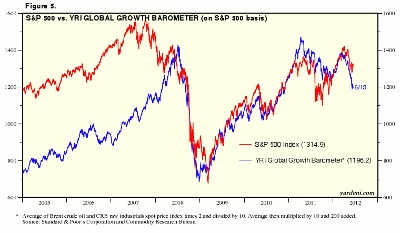The latest economic numbers don’t look good, and the Fed probably lacks the power to make them better, writes MoneyShow.com senior editor Igor Greenwald.
It’s Flag Day in the US, but sadly no banner news to run up the pole and salute. The latest economic reports offered more proof that growth is slowing to a crawl.
A market addled by the upcoming quarterly expiration is shrugging off the drizzly news on hopes that it will force the Federal Reserve to cut everyone some more slack next week.
I doubt they will pull a rabbit out of the hat. But what the Fed can and will do remains a figment of a speculative imagination, while unmistakable signs of a slowdown are everywhere in the data.
Initial weekly jobless claims, which three months ago looked like they might drop to the 350,000 level associated with strong employment growth, are back up to 386,000 now, which translates as “good luck with that raise” for most of those lucky enough to have work.
Retail sales were down for a second straight month in May, and while a lot of that was gasoline, there was almost no incremental growth excluding gas, auto sales (still going strong), and building materials (down big again after an early start to the construction season).
Economist Edward Yardeni has a posted a couple of eye-opening charts documenting the downward trend at home and abroad. The Citigroup Economic Surprise Index, which got as high as 90 early in the year, is down -50 or so in a straight-line drop paralleling last year’s shenanigans. Meanwhile, a global commodity index that has closely correlated with stock prices in recent years suggests downside risk to about 1,200 on the S&P 500.
We still have those decent auto sales, and housing sentiment continues to turn. The Small Business Optimist Index compiled by the National Federation of Independent Business is holding springtime highs not previously seen since February 2011, and late 2007 before that. But only 7% of those surveyed thought the next three months might be a good time to expand, and a slight majority expected worse business conditions in six months.
Also telling is that, according to Bloomberg News, the last quarter saw the biggest jump in 60 years in home equity as refinancing homeowners paid down mortgage debt. More borrowers opted to shorten the term of the mortgage to 15 years to be rid of that obligation that much faster. Experts quoted in the piece cited the “fear factor.”
“People are looking around them and seeing people they know getting their salaries cut or losing their jobs,” one explained. And income poured into paying down mortgage debt is income that won’t be available to spend elsewhere.
Whatever bones, if any, the Fed opts to throw the market next week, it looks rather powerless to change this mood given its considerable exertions to date. And that can’t help but ultimately leave shareholders disappointed.
As Dick Green of Briefing.com wrote this morning, “Regardless of what the Fed does, counting on their actions to support stock prices in the face of seriously negative news is risky. US economic growth is slowing and earnings forecasts are being lowered.”
Until traders discard their fleeting faith in the Fed once again and the economy shows signs of reversing the recent downward momentum, the market should continue to flag.























